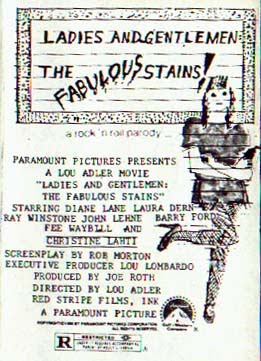Night Flight’s video profile of Dire Straits — originally airing on August 15, 1986, and now available on Night Flight Plus — offers a look at both the UK and the US videos for “Walk of Life,” a song which was not only one of the band’s biggest hits, but which one nervy editor suggests can improve the ending of any movie!
Dire Straits had earned plenty of critical and commercial respect for their first four records, with songs like “Sultans of Swing” and “Industrial Disease” becoming album rock radio staples.
The release of Brothers in Arms in the spring of 1985, however, catapulted the band to their biggest level of success.
The album debuted at #1 on the UK charts, spent nine weeks at #1 on the US Billboard chart, and even set a Guinness World Record for being the first album in the nascent CD format to sell a million copies.
Its lead US single, “Money for Nothing,” was the band’s first #1 Top 40 hit, won a Grammy for Best Rock Performance by a Duo or Group with Vocal, and its accompanying music video won Video of the Year at the third MTV Video Music Awards.
In this profile, broadcast after the band’s two Grammy wins, you will be treated to many unique videos created for the band’s songs, along with exclusive interview footage with Knopfler, where he addressed some of his feelings about the art form.
In one segment, he stated that he would leave directors alone to dramatize his music as they liked, since they should be accorded the same artistic freedom as filmmakers that he enjoyed as a musician.
The three videos from the Making Movies album directed by photographer and commercial artist Lester Bookbinder — “Romeo and Juliet,” “Tunnel of Love,” and “Skateaway” — are a prime example of this cooperative mindset. This trio was packaged into a twenty minute short that played in theaters and was an early home video success.
However, upon the release of Brothers in Arms, Knopfler had soured on the process.
Where he had been an active dramatic participant in clips for “Tunnel of Love” and “Private Investigations,” for the singles from Brothers, he chose only to appear in performance footage or occasional candid moments.
Steve Barron, who directed two videos for the album, said,
“The problem was that Mark Knopfler was very anti-videos. All he wanted to do was perform, and he thought that videos would destroy the purity of songwriters and performers.”
“Walk of Life” was the first video offered to American television outlets, though it was not the first single released from the album.
Filmed in the tunnel that runs under the Thames from London Docklands to Greenwich, it depicted a young busker portrayed by Tom Jennings, dressed as Knopfler often dressed in concert, playing the iconic 1937 silver steel guitar from the cover of the album, performing for change from London commuters, with some cutaways to a daylight concert by the band.
After the smash success of “Money for Nothing,” “Walk of Life” was earmarked as the followup single, but record executives requested another video to be made for the song, feeling the first version wasn’t clicking. A recent USC Film School graduate, Stephen R. Johnson, got the assignment.
The new clip featured another performance of the band, this time intercut with dozens of moments from American sporting events.
In the book I Want My MTV, Johnson described how the incongruous concept came from Knopfler himself:
“I went on tour with them to shoot live footage, and Mark Knopfler told me he wanted the video to have sports in it. So I wrangled all this funny sports footage, with bloopers and the like. Mark’s other edict was that he didn’t want to be photographed from the side, because he didn’t like the fact he had a prominent proboscis. Everyone in the crew was running into each other, trying to avoid that angle.”
The new video proved very effective. “Walk of Life” became the band’s biggest UK hit, reaching #2 on their singles chart, and peaking respectably at #7 on the US singles chart.
The original busker video for “Walk” was not included in the band’s home video anthology; Johnson’s sports-themed video has effectively become the default version.
This episode of “Night Flight” offers fans a rare opportunity to watch them back to back and decide for themselves which they prefer. The two videos are a study in contrasts.
The first narrative clip uses the song for poignance, as its hard-working protagonist is often ignored by travelers, barely gets any money, and ends up being forced by cops to pack up and leave.
The second clip uses the song for lighthearted buoyance, at first underscoring missed plays and embarrassing moments, then ending with moments of triumphant victories.
One curious detail both videos share in common though are prominent shots of replacement guitarist Jack Sonni’s bare feet.
Each video ultimately suits the song well, since its message is that Johnny’s struggle is our struggle.
As sports blogger “CJ” observed, “[While] Mark Knopfler’s lyrics are clearly about a street musician busking in subway stations, his working class platitudes are general enough that we can easily apply them to an athlete doggedly pursuing his dreams, on and off the field. Indeed, even the title hints at something greater…Listening to the song feels like receiving one giant ‘attaboy’ from your radio.”
It was that spirit of universality that drove freelance editor Peter Salamone this past March to create The Walk of Life Project, asserting that the song was perfect for the ending of any movie.
Through 52 different examples, running multiple decades and genres, all available to view at his website, Salamone demonstrated his point. His playful exercise received widespread media coverage, inspiring dozens of fans and imitators to continue the experiment.
Here is one of the recent fan-made responses we particularly enjoyed, with the maxim applied to Point Break:
Mark Knopfler dismantled Dire Straits and went his own way a long time ago, and newer generations may derisively refer to the band as “dad rock” today.
However, when those first few organ notes waft into your ears, whether you’re recalling those videos from before, or maybe living the movie of your life right now, we’re sure you’ll think the moment plays better with that great song underneath.
See both “Walk of Life” interpretations, along with other classic Dire Straits videos and exclusive interview footage with Mark Knopfler, right now on Night Flight Plus!
(This essay was originally written for Night Flight Plus. It has been recreated in the style it was presented in at the site, and matched to its original date of publication. Tremendous thanks to Stuart Shapiro and Bryan Thomas for the platform.)





























